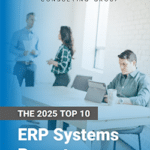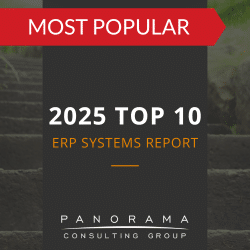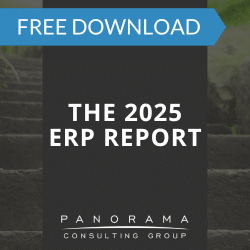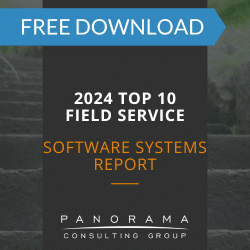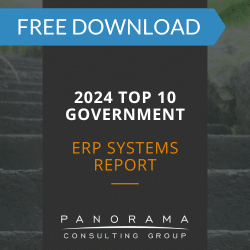- Identifying ERP stakeholders often involves uncovering informal influencers who shape behavior outside traditional hierarchies.
- ERP stakeholder engagement strategies should account for trusted employees who influence peer adoption behind the scenes.
- Stakeholder management in ERP implementations often overlooks influencers tied to legacy processes and informal routines.
- Organizational change management efforts are more successful when they account for informal authority, localized influence, and culturally embedded behaviors.
During ERP implementation, executives often focus on timelines and budgets, while overlooking the people whose influence actually determines ERP success. Among these people, “invisible stakeholders” represent one of the most underestimated sources of influence.
Identifying ERP stakeholders isn’t as straightforward as listing department heads. Many individuals hold power without a title, shape behavior through informal influence, or quietly become gatekeepers to success. Understanding who these people are—and engaging them in meaningful ways—can mean the difference between widespread adoption and quiet resistance.
Today, we’re exploring how to surface and engage these hidden forces in your organization.
Change Management Case Study
The client recognized their need for more comprehensive change management, so they asked us to fill in the gaps. We developed a robust communication plan to supplement the vendor’s communication approach.
Why Invisible Stakeholders Influence ERP Success
Stakeholder management in ERP implementations must go beyond traditional org charts. You’ll find stakeholders in lunchrooms, remote Slack channels, and regional offices that haven’t yet been invited to the planning table.
Many of these influencers are employees who have built their careers on legacy processes and customized workarounds. These individuals might not carry decision-making titles, but they do shape the informal culture that determines whether new systems are used as intended.
When executives overlook these entrenched stakeholders, they are likely to distrust the new system and influence others to resist change. This change resistance often takes the form of passive non-compliance:
- Leaving fields blank
- Skipping important steps
- Delaying data entry
- Using workarounds that bypass the system entirely
As a result, organizational silos stay intact and data quality degrades.
For example, in a food and beverage company, executives might move forward with a manufacturing ERP implementation without involving long-time plant operators who are seen as go-to experts. If these plant operators feel like they haven’t had enough input into system design, their resentment may encourage others to disengage, as well.
How to Spot Unseen Influencers in Your ERP Project
Identifying ERP stakeholders means looking beyond title and tenure and instead focusing on who actually influences decisions, earns trust, and shapes daily behavior within different parts of the organization.
Here are five ways to surface these hidden players and bring them into the change journey before resistance takes root.
1. Map Social Patterns, Not Just Hierarchy
Social patterns are often more predictive of ERP adoption than organizational hierarchy.
Do you know who employees turn to for help, who they trust with problems, and who they follow when things get confusing?
We recommend using surveys, focus groups, and observational interviews to uncover this relational data.
For instance, you could ask, “Who helped you learn the old system?” and then look for patterns in responses. You might identify people in non-supervisory roles—project coordinators, floor leads, senior analysts—who are influencing peers from behind the scenes.
2. Look for the People Behind the Workarounds
Employees who build workarounds are influential because they often have deep functional knowledge and informal control over how work gets done.
For example, department leads often get called on when the system breaks down or when something needs to get done fast. As a result, they may have developed unofficial shortcuts—such as custom spreadsheets or side tools—which their teams trust more than formal ERP processes or IT guidance.
3. Ask Regional Managers to Identify Trusted Go-To People
Regional teams often have influencers without prestigious titles who hold tremendous sway in how people engage with change.
Speak with frontline or regional managers and ask, “Who do people listen to when it comes to how work should be done?”
Don’t stop at formal leads—press for the unofficial go-tos, such as:
- A bilingual supervisor who explains system updates in the local language
- An administrative assistant who trains new hires informally
- A warehouse technician who everyone turns to for help navigating the inventory interface
4. Observe Training Sessions for Informal Authority
During training sessions and user testing, watch who asks the most questions and who hangs back with crossed arms.
The people speaking up are often informal leaders who feel confident shaping the trajectory of training and system design. However, the people staying quiet are just as important.
Our change management consultants often tell clients that the person sitting quietly in the back may be a respected influencer who signals what’s safe to accept, what’s worth questioning, and whether the change is worth investing energy in.
5. Look for Knowledge Brokers, Not Just Process Owners
In every organization, a small number of individuals act as knowledge brokers—they move between departments, bridge silos, and explain one team’s needs to another. These people may not own any processes end-to-end, but they’re critical in cross-functional ERP implementations.
For example, a professional services firm might have a senior account coordinator who regularly liaises between client-facing teams and the billing department. This person might be overlooked in a stakeholder analysis and the organization could miss an opportunity to enlist a trusted voice to reinforce key messages.
ERP Stakeholder Engagement Strategies
Surfacing invisible stakeholders is only half the challenge. To realize your ERP transformation goals, you also need a stakeholder engagement strategy that makes these influencers part of your change story.
Here are three strategies that strengthen stakeholder buy-in and build advocacy.
1. Create Advisory Circles
Advisory circles function as informal steering committees composed of the influencers you’ve identified across levels and regions.
Hold monthly meetings with these influencers where they can speak freely without worrying about hierarchy or politics. Use these sessions to test communication plans, explore how upcoming changes might affect employees, and uncover feedback that usually doesn’t reach the executive level.
2. Leverage Regional Influencers in Global Rollouts
Regional teams often rely on certain individuals to translate corporate strategy into practical action. If these individuals are excluded from the ERP design or rollout, entire regions may quietly resist adoption.
We recommend formally involving these regional influencers in localization workshops, pilot testing, and message translation efforts—so they can adapt global plans to local realities and champion change in a way their teams trust.
3. Normalize Ongoing Change Conversations
ERP implementation is a journey of continuous evolution. That means stakeholder conversations must become a regular part of daily operations.
Weave these conversations into existing meetings, routines, and communication channels so discussing change feels natural, not like an extra task.
Our ERP implementation consultants often advise clients to use town halls, team meetings, and lunch-and-learns to keep change visible and participatory. Over time, this builds a culture where people are used to giving input, open to adjusting how they work, and less likely to stay quiet if something isn’t working.
CEOs Need to Care About ERP Stakeholder Management
Invisible stakeholders are some of your most valuable allies in driving lasting change—but only if you recognize their influence and treat them like strategic partners.
Looking for organizational change management guidance that puts people at the center of digital transformation? Panorama’s independent ERP consultants are known for helping employees adapt to new processes and technology. Contact us below for an ERP consultation.
